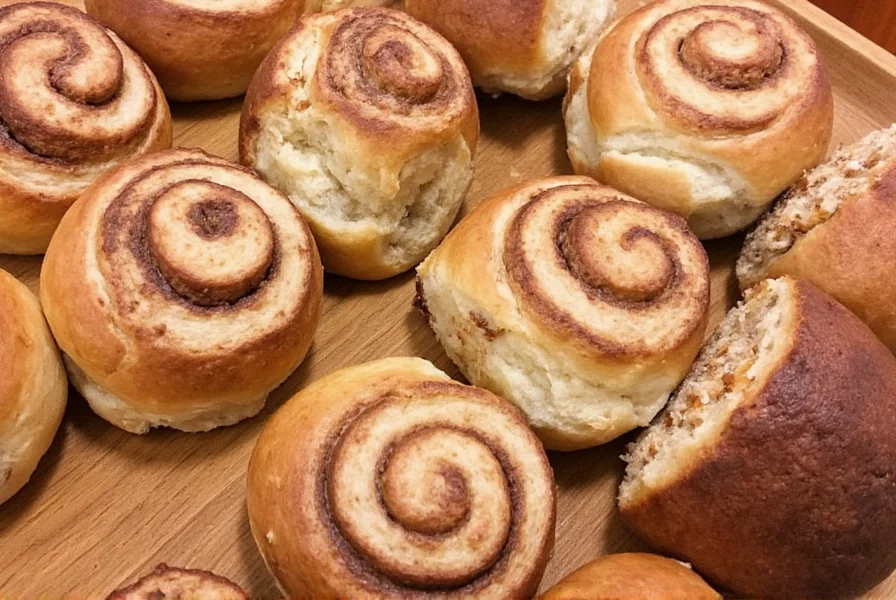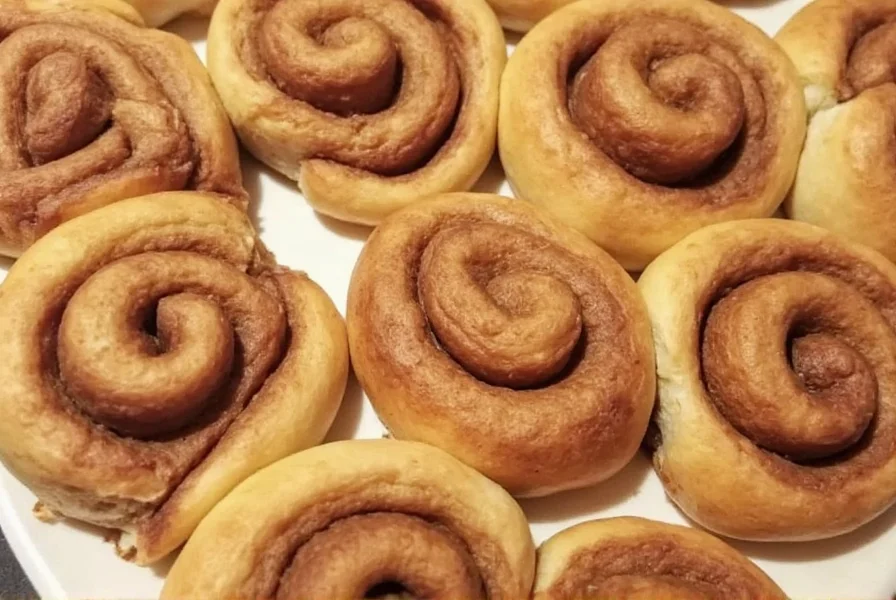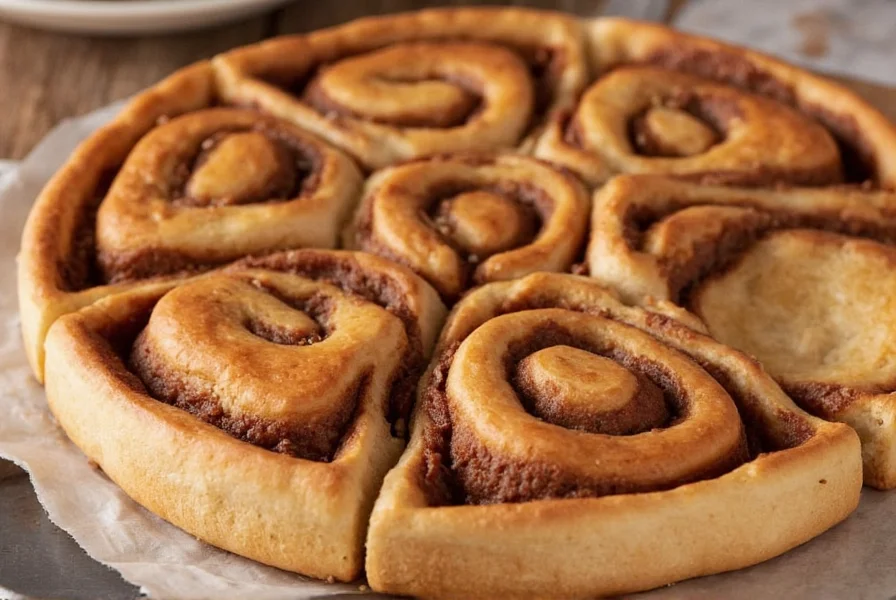Understanding the historical context of baking in 19th century America reveals why the popular notion of "Old West cinnamon rolls" is a modern misconception. This article explores the actual baking practices of frontier settlers, the true origins of cinnamon rolls, and how to create historically inspired sweet breads that honor pioneer cooking traditions.
The Timeline of Cinnamon Rolls: Separating Fact from Fiction
Many people encounter "Old West cinnamon rolls" on restaurant menus or at themed events, creating confusion about their historical authenticity. To clarify this misconception, let's examine the actual timeline of sweet bread development in America.
| Time Period | Baking Developments | Available Sweeteners | Common Spices |
|---|---|---|---|
| American Old West (1803-1890) | Cast iron cookware, wood-fired ovens, sourdough starters | Molasses, honey, maple syrup | Nutmeg, allspice, limited cinnamon |
| Early 20th Century | Commercial yeast, baking powder, improved ovens | Refined white sugar becomes widely available | Increased spice availability through trade |
| 1950s Sweden | Modern cinnamon roll (kanelbulle) standardized | Abundant refined sugar | Cinnamon widely used in baking |
Why Cinnamon Rolls Didn't Exist in the Old West
The primary reason authentic cinnamon rolls couldn't have existed during the American frontier period comes down to three critical factors: ingredient availability, baking technology, and cultural origins.
Ingredient limitations were significant. While cinnamon reached America through trade routes, it remained an expensive luxury item throughout the 19th century. Most frontier settlers couldn't afford to use cinnamon generously in baking. Instead, they relied on more accessible sweeteners like molasses, sorghum syrup, and honey. The refined white sugar essential for modern cinnamon roll fillings wasn't widely available or affordable until the late 19th and early 20th centuries.
Baking technology also restricted what pioneers could create. Without reliable temperature control in wood-fired ovens and limited access to commercial yeast, settlers primarily baked simpler breads using sourdough starters. The delicate dough required for modern cinnamon rolls—with their multiple layers and precise rising requirements—would have been extremely challenging to produce consistently in frontier conditions.
Cultural origins tell the definitive story. Cinnamon rolls as we recognize them today developed in Sweden during the mid-20th century as "kanelbullar." This specific pastry format didn't exist in American baking traditions until much later, when Swedish immigrants brought their recipes to America.
What Pioneers Actually Baked: Authentic Frontier Sweet Breads
While they didn't have cinnamon rolls, settlers did enjoy various sweet breads that served similar purposes in their diets. These historical alternatives provide a more accurate picture of frontier baking:
- Sally Lunn - A yeast-raised sweet bread baked in a round pan, often served with honey or molasses
- Johnnycakes - Cornmeal-based cakes sometimes sweetened with molasses
- Stack cakes - Layered spice cakes using dried apple filling between layers
- Hotcakes - Frontier pancakes often served with sorghum syrup
- Boiled doughnuts - Fried dough treats sometimes flavored with available spices
These historical sweet breads represent the actual baking traditions of the American frontier. They used ingredients settlers could produce themselves or obtain through limited trade networks, making them far more representative of authentic Old West cooking than modern cinnamon rolls.
Why the "Old West Cinnamon Rolls" Myth Persists
The misconception about Old West cinnamon rolls likely stems from several factors:
Modern restaurants and bakeries often use "Old West" as a marketing term to create nostalgic appeal for their products. Theme parks, western resorts, and frontier-themed eateries have popularized the idea of cinnamon rolls as frontier fare, despite the historical inaccuracy. Additionally, many historical reenactment groups and living history museums sometimes incorporate modern interpretations of historical foods without proper research.
Another contributing factor is the natural human tendency to project modern food preferences onto historical periods. When people imagine frontier life, they often unconsciously insert familiar comfort foods like cinnamon rolls into that historical context.
Creating Historically-Inspired Frontier Sweet Rolls
If you're interested in baking sweet rolls that honor actual frontier cooking traditions rather than perpetuating the cinnamon roll myth, consider these historically appropriate adaptations:
Use molasses or sorghum syrup as your primary sweetener instead of refined sugar. Incorporate available pioneer-era spices like nutmeg or allspice rather than generous amounts of cinnamon. Create a simple rolled pastry using a basic yeast dough that pioneers could have produced with their sourdough starters. For a truly authentic experience, bake your sweet rolls in a Dutch oven over an open fire rather than a modern oven.
This approach to historical baking—sometimes called "historically inspired" rather than strictly authentic—allows you to enjoy sweet pastries while respecting the actual limitations and traditions of frontier cooking. Many historical food enthusiasts find this method more satisfying than simply applying a "frontier" label to modern recipes without regard for historical accuracy.

Preserving Authentic Food History
Understanding the true history of American frontier baking helps preserve authentic culinary traditions. Food historians and preservationists emphasize the importance of accurate historical representation in cooking. By recognizing that cinnamon rolls are a modern creation rather than a frontier tradition, we honor the actual ingenuity of pioneer bakers who created satisfying sweet breads with extremely limited resources.
The next time you encounter "Old West cinnamon rolls" on a menu or at an event, you'll know to appreciate them as a modern interpretation rather than an authentic historical recipe. This knowledge empowers you to seek out or create baked goods that more accurately reflect the resourcefulness and culinary traditions of America's frontier settlers.

Did pioneers use any cinnamon in their baking?
Pioneers had limited access to cinnamon, which remained an expensive imported spice throughout the Old West era. While some well-to-do settlers might have used small amounts of cinnamon occasionally, most frontier families couldn't afford to use it regularly in baking. When available, they used it sparingly in special occasion cakes rather than everyday breads.
What sweeteners did Old West settlers use instead of sugar?
Frontier settlers primarily used molasses, sorghum syrup, and honey as sweeteners. Maple syrup was common in northern territories. These sweeteners were either produced locally or obtained through regional trade networks. Refined white sugar was expensive and difficult to obtain until the late 19th century, making it a luxury item rather than a staple ingredient.
When did cinnamon rolls actually originate?
The modern cinnamon roll as we know it today originated in Sweden during the 1950s as "kanelbullar." While various rolled sweet breads existed in European baking traditions, the specific format with generous cinnamon-sugar filling and icing developed in mid-20th century Sweden. Swedish immigrants later brought this recipe to America, where it gained popularity in the latter half of the 20th century.
What's the most historically accurate sweet roll I can make for an Old West theme?
For a historically inspired Old West sweet roll, use a simple yeast dough with sourdough starter instead of commercial yeast. Sweeten with molasses or sorghum syrup rather than refined sugar. If including spices, use small amounts of nutmeg or allspice instead of cinnamon. Bake in a Dutch oven over indirect heat to simulate frontier cooking conditions. This approach honors actual pioneer baking practices while still providing a satisfying sweet treat.
Why do so many restaurants claim to serve authentic Old West cinnamon rolls?
Many restaurants use "Old West" as a marketing term to create nostalgic appeal, regardless of historical accuracy. This practice, known as culinary myth-making, helps establish a thematic experience for customers. While these modern interpretations can be delicious, they often prioritize entertainment value over historical authenticity. Understanding this distinction allows diners to appreciate these foods as contemporary creations rather than genuine historical recipes.











 浙公网安备
33010002000092号
浙公网安备
33010002000092号 浙B2-20120091-4
浙B2-20120091-4